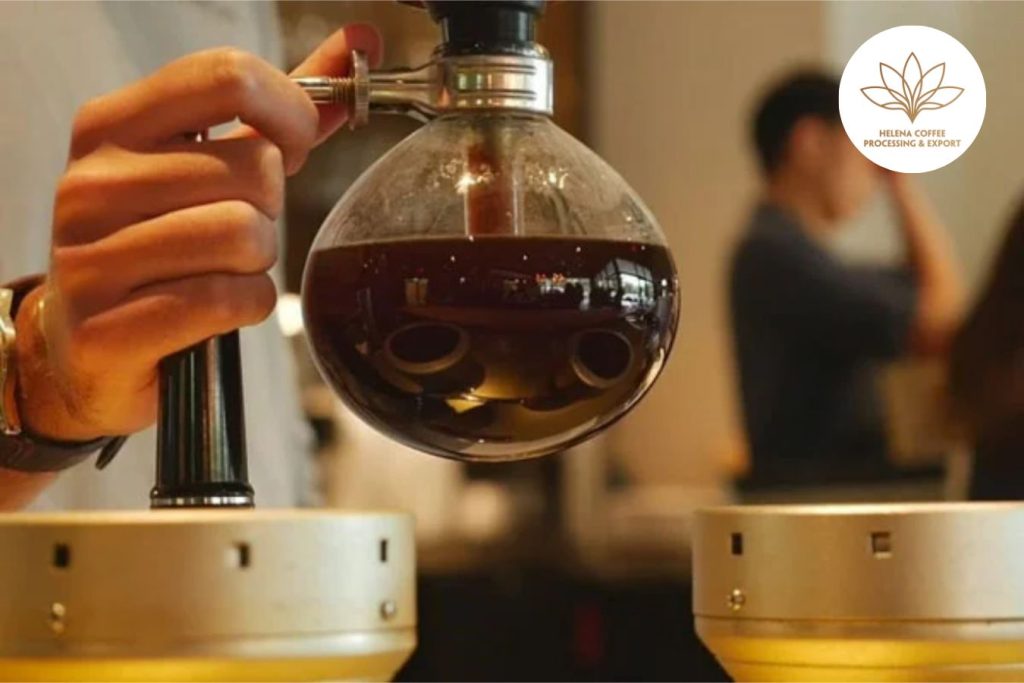Coffee Making Experience With The Siphon Hario: A siphon (also known as a Syphon) is a coffee maker designed by a French housewife in the 1840s (Marie Fanny Amelne Massot). After nearly two centuries, various improvements to the siphon brewing technique have been developed.
This has been a long road with many ups and downs; at one point, the coffee business completely forgot about this brewing process, only to resurrect it decades later — see more at the Historical phases of the Siphon.
Before publishing this article, Prime would like to express its gratitude to the author Binh Truong of the seedtomysoul.com blog, a location where valuable and incredibly beneficial sharing articles can be found. More information can be found in the original article.
Siphon vase from Hario
This is an intriguing dispensing device (used by the author in the article) that also serves as a water infusion tube. Glass funnel, glass bulb, and a heat source are the three primary components of a siphon. It should also be noted that Hario is a well-known Japanese mixing equipment business that, in addition to Siphon, stands out with the V60 funnel.
To get started with Siphon at home.
To use a siphon, you need to make sure the glass funnel and container are cleaned. The heat source can be used with a mini gas stove, a device that is very popular nowadays in developed countries (USA, Japan, Europe). Or use a traditional alcohol lamp/stove.
The alcohol lamp was used as originality in Seed to My Soul. This is because 90-degree alcohol is relatively inexpensive in Vietnam; you can readily find it in drugstores. The process of brewing coffee with Siphon utilizing alcohol lights takes only 5-10 minutes, so the amount of alcohol drunk is relatively low.
Siphon makes you feel like you’re in a chemistry lab when you’re “playing” with it. “Siphonistas” are baristas who produce Siphon coffee at Blue Bottle (a well-known coffee roaster in the United States and Japan).
About the principle of reverse osmosis
The reverse osmosis principle is at the heart of Siphon’s operation. When using an alcohol lamp to boil water, the steam will pass through the glass tube from the glass bulb (containing the water), permeate the coffee, and condense into coffee droplets.
The steam ejection process will continue until the heat source is removed (the alcohol lamp is turned off) and all of the water in the glass bulb has been forced upwards. During this operation, the siphonista must stir thoroughly with a long spoon/spoon to ensure that the coffee is well absorbed in the boiling water.
When the time for the coffee and hot water to “meet” has passed, generally 3-5 minutes, the siphonista turns off the heat source. The reverse osmosis process begins when the heat is no longer pressed to push from the glass bulb to the top of the funnel. The coffee water will seep back into the glass bulb, while the filter will hold the coffee powder in place, preventing it from falling.
Coffee experience with many emotions
Making coffee with Siphon is an experience that extends from the visual experience to the auditory (the sound of steam) and the sensation of heat, and finally to the taste. Since using a direct heat source, Siphon is very hot, siphonista must always be careful when preparing.
In return, you will learn a lot after five months of working with this tool. In my personal experience, it is not just about adding water, adding coffee, and boiling it. Still, it is also preparing, measuring the amount of water, quantifying the coffee, cooking time, and osmosis time. etc.…
In Japan, siphon mixing has been brought to an art level with many innovative siphon starts whose recipes are elusive. Here, the Japanese hold an annual siphon starts contest, with the most baristas participating, to choose the best one.
More specifically, the Japanese believe that the technique of stirring coffee in a glass funnel with a bamboo spoon (Bamboo stirring paddle) will also bring out a different flavor during the preparation process.
Related Posts:
- What Is The History Of The Siphon?
- Coffee Drying – Coffee Processing And Drying Process
- Washed Coffee Processing – Coffee Wet Fermentation
References:
- Primecoffea, Trải nghiệm pha cà phê với bình Siphon Hario, Tháng Một 18, 2019

